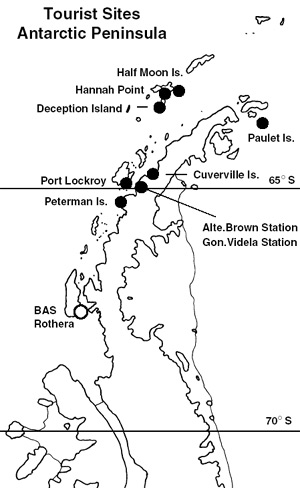
| Glasgow Digital Library | Voyage of the Scotia | BRUCE | PEOPLE | SHIP | ANTARCTIC | INDEX |
|---|
Antarctica is not usually thought of as a tourist destination but over 15,000 people per year now visit the continent during the Antarctic summer (December-February). Tourism began in 1958 but it was not until the 1980s that tour ships began to visit the south (47% coming from the USA, 33% from Germany, Australia, Japan and the UK). The dominant age group of visitors is retired people.
In 1991, the International Association of Antarctic Tour Operators (IAATO) was formed to co-ordinate tours in the south. Most tours are to the Antarctic Peninsula and usually last from seven to 14 days. Passengers are flown to Ushuaia on the south coast of Tierra del Fuego, then board specially strengthened ships for the Antarctic. Icebergs, glaciers, penguins, seals, whales, the clear atmosphere all make the Antarctic a place people enjoy, and many wish to return to the south although the weather can be very wild. IAATO rules limit the number of passengers per ship to 400 due to very limited rescue facilities. Prices for a cruise vary between £3,000 and £5,000.
Flights to the Antarctic began in 1977 from Christchurch with Air New Zealand. In 1979, there was a disastrous crash when an Air New Zealand DC10 crashed into Mount Erebus killing 257 people. Air flights have subsequently begun again, and Qantas operate flights over the Antarctic in a Boeing 747. In summer of 1997-98, a total of 3,146 people were carried.

| Glasgow Digital Library | Voyage of the Scotia | BRUCE | PEOPLE | SHIP | ANTARCTIC | INDEX |
|---|